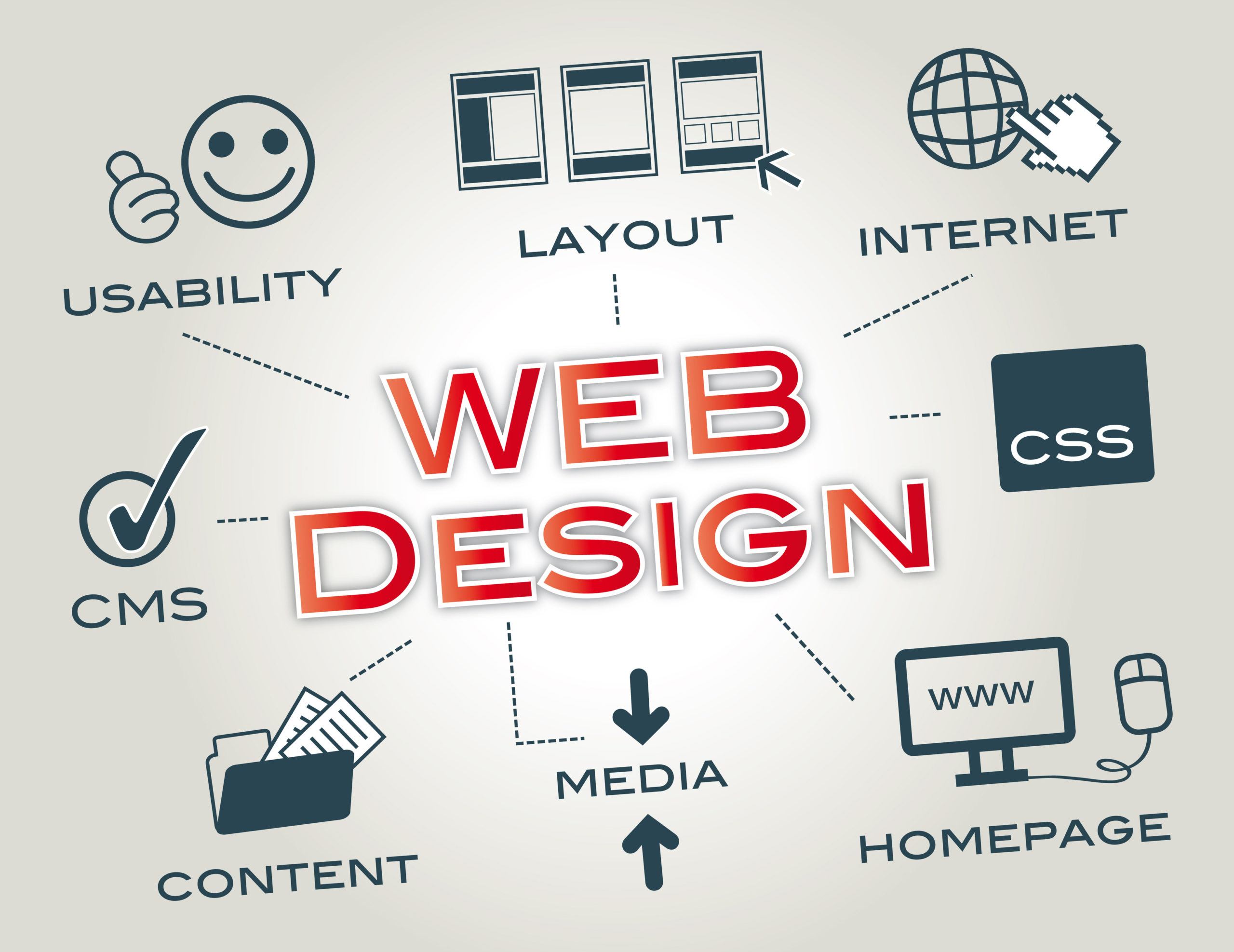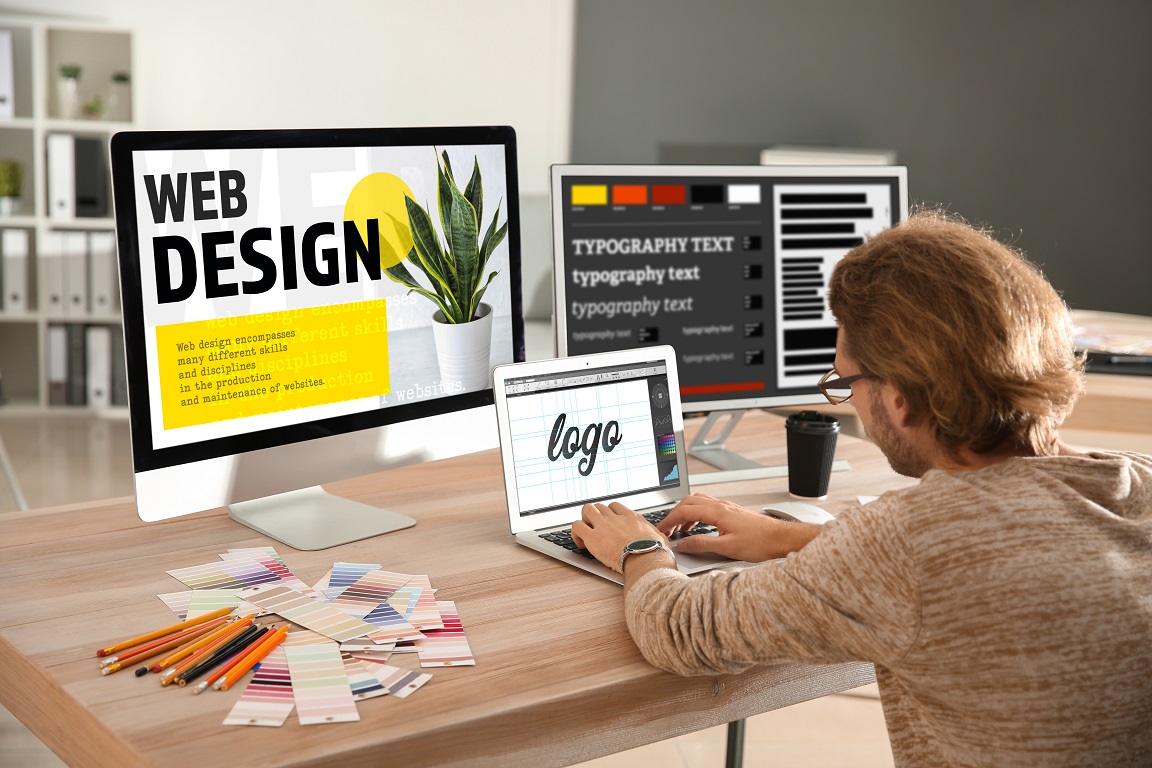Exploring Creative Fads in Web Design for Modern Companies
The landscape of web design is consistently developing, reflecting the dynamic demands of modern-day organizations. Current fads highlight a choice for minimalism, vibrant typography, and interesting interactivity. Companies increasingly prioritize user experience via mobile-first principles and personalized web content. Furthermore, a focus on sustainability is gaining grip. Comprehending these patterns is essential for businesses intending to attract attention in a crowded market. What ramifications do these shifts hold for the future of electronic engagement?
Welcoming Vibrant Typography
Strong typography has become a defining component in contemporary web design, recording interest and conveying messages with striking quality. This pattern focuses on visually impactful message that enhances user interaction and brand identification. Designers often use large typefaces and distinct fonts to create a power structure, guiding customers through content effortlessly.
The tactical use vibrant typography enables for reliable narration, enabling brand names to interact their worths succinctly. It offers not only aesthetic functions however also practical ones, as it enhances readability across tools and screen dimensions.
As web sites contend for user focus, strong typography stands out in a saturated digital landscape. Its adaptability makes it possible for designers to explore contrasting layouts and shades, better enhancing its efficiency. Eventually, embracing bold typography stands for a shift in the direction of even more expressive and communicative web design, cultivating a deeper link in between brand names and their target markets.
The Rise of Minimalist Design
As digital environments become progressively cluttered, the surge of minimalist design uses a rejuvenating alternative that prioritizes simplicity and capability. This design philosophy remove unneeded components, enabling web content to take spotlight. By concentrating on clean lines, adequate white room, and a minimal shade combination, minimalist design enhances user experience and improves navigation.
Companies embracing this fad purpose to share their brand name message clearly and efficiently, fostering a feeling of calm and clearness. The lack of diversions helps individuals concentrate on vital information, resulting in boosted engagement and conversion prices. Additionally, minimalist design lines up well with mobile-first techniques, making sure that websites remain easily accessible and easy to use throughout numerous gadgets.
Ultimately, the surge of minimalist style reflects a more comprehensive shift towards prioritizing user demands and preferences, making it an effective tool for modern businesses aiming to make a long lasting influence in the digital landscape.
Immersive Animations and Interactivity
While many internet designers accept minimal appearances, an additional engaging pattern obtaining traction is using immersive computer animations and interactivity. This strategy improves user involvement by creating appealing experiences that attract visitors right into the content. Developers use dynamic aspects such as animated backgrounds, scrolling effects, and interactive infographics to interact complicated concepts in an obtainable manner.
These computer animations not only provide visual interest however likewise guide users via the navigating process, making communications extra instinctive. Float impacts and animated shifts can motivate customers to check out better, leading to enhanced time spent on the site.
This pattern lines up with the wider motion towards narration in internet design, where computer animations serve as narrative tools that convey brand name messages properly. By incorporating immersive animations and interactivity, businesses can separate themselves in a jampacked online landscape, inevitably improving user fulfillment and brand loyalty.
Mobile-First Style Concepts
Mobile-first style concepts highlight prioritizing user experience by making sure web sites work effortlessly on smaller screens. This approach includes receptive layout methods that adapt to numerous tool sizes while preserving visual stability. Furthermore, it concentrates on touchscreen navigation style, boosting use for mobile users.
Prioritizing User Experience
How can designers effectively focus on user experience in a significantly mobile-centric globe? Highlighting mobile-first layout concepts is vital, as individuals largely engage with sites via mobile phones. This strategy motivates developers to improve web content, ensuring it is navigable and conveniently available on smaller sized screens. Key methods include simplifying navigating, decreasing load times, and employing touch-friendly components that boost interactivity. Additionally, prioritizing clear typography and user-friendly layouts can considerably enhance user complete satisfaction. Developers must continually collect user feedback to fine-tune their techniques, adjusting to developing user demands and choices. By concentrating on these elements, businesses can produce an appealing digital experience that fosters loyalty and drives conversions, eventually lining up with the assumptions of today's mobile users.
Responsive Format Strategies
Developers embrace receptive format methods to produce adaptable and flexible internet experiences that satisfy numerous display dimensions. This technique focuses on mobile-first style concepts, guaranteeing peak functionality on smaller sized devices before scaling up for larger screens. By using fluid grids, adaptable images, and media questions, designers can maintain a cohesive visual identity across all platforms. This approach not just enhances user engagement yet likewise improves search engine positions, as mobile-friendly sites are favored by search formulas. In addition, responsive layouts enable services to reach a more comprehensive audience, fitting users on desktops, smart devices, and tablets alike. In general, carrying out these methods is necessary for modern-day web design, making certain that services stay competitive in an ever-evolving electronic landscape.
Touchscreen Navigating Layout
With the surge of mobile phones, touchscreen navigation has actually ended up being an essential aspect of web design. Designers are significantly adopting mobile-first principles to boost user experience and engagement. web design company. Effective touchscreen navigation focuses on bigger switches and instinctive motions, enabling customers to connect conveniently with go material. This strategy lowers aggravation and encourages expedition, as users can browse perfectly with their fingers. Furthermore, integrating swipe motions and tap functionality satisfies the all-natural behaviors of mobile customers. Feedback devices, such as aesthetic signs and computer animations, enhance usability further by confirming activities. As touchscreens control user communications, using these layout components not just aligns with modern assumptions however additionally cultivates an extra accessible and enjoyable browsing experience for all individuals
Individualized User Experiences
What makes a user really feel absolutely involved on a web site? The solution usually hinges on customized user experiences. By tailoring content and navigation to private preferences, companies can produce a purposeful link with their audience. This personalization can be accomplished via numerous approaches, such as analyzing user actions, utilizing cookies, and providing customized referrals based upon previous interactions.
Ecommerce systems that recommend products based on surfing background not just boost user experience however likewise raise conversion prices. Including vibrant material that adapts to the user's area or time of day can further improve involvement.
Furthermore, customized introductions or messages can make users really feel valued and comprehended. As modern-day companies venture to stand out in an affordable electronic landscape, welcoming tailored user experiences comes to be crucial, cultivating loyalty and encouraging repeat check outs. Eventually, this technique changes a standard web site right into an interactive system that reverberates with its audience.
Sustainability in Web Design
As the electronic landscape remains to evolve, the relevance of sustainability in web design has gained substantial interest. Developers are increasingly mindful of the environmental influence their developments can have, prompting a shift in the direction of eco-friendly practices (Web Design services). Sustainable web design concentrates on maximizing sites to decrease energy consumption and carbon impacts. Methods consist of using minimalistic layout principles, maximizing pictures, and employing efficient coding methods to improve loading rates
The option of holding companies plays a necessary function; lots of developers are currently deciding for environment-friendly holding solutions powered by sustainable energy. By focusing on access and straightforward navigation, lasting designs also accommodate a wider target market, improving usability. This aware strategy not only appeals to environmentally-minded customers however likewise contributes to the total durability and efficiency of websites. Inevitably, sustainability in web design mirrors an expanding pattern towards accountable digital practices that align with contemporary service worths.

Often Asked Concerns
Just How Can I Pick the Right Color Pattern for My Site?
To pick the right color design for an internet site, one should consider the brand name's identification, target audience, and psychological effect. Utilizing color concept and screening mixes can boost user experience and visual appeal significantly.
What Are the Ideal Devices for Prototyping Web Designs?
The most effective tools More about the author for prototyping web styles include Figma, Sketch, Adobe XD, and InVision. These platforms offer user-friendly interfaces, cooperation attributes, and extensive libraries, making them suitable for developers to create and fine-tune their ideas successfully.
Exactly how Do I Determine the Efficiency of My Web Design?
To measure web design effectiveness, one ought to evaluate user engagement metrics, conversion prices, and use responses (agency for web design). A/B testing and heatmaps can additionally offer insights into user habits, directing required adjustments for better efficiency and user experience
What Prevail Web Design Mistakes to Stay Clear Of?
Typical web design mistakes consist of messy layouts, bad navigation, slow packing times, absence of mobile optimization, poor contrast, and neglecting user comments. Avoiding these pitfalls boosts user experience and boosts general effectiveness of the web site.
How Often Should I Update My Internet Site Style?
A website layout should be upgraded every 2 to 3 years, or quicker if considerable modifications in branding or technology happen. Regular updates maintain the site fresh, practical, and lined up with existing user assumptions.
